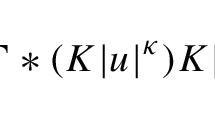Abstract
The second-order radial differential equations for the relativistic Dirac hydrogen atom are derived from the Dirac equation treated as a system of partial differential equations. The quantum operators which arise in the development are defined and interpreted as they appear. The splitting in the energy levels is computed by applying the theory of singularities for second-order differential equations to the Klein-Gordon and Dirac relativistic equations. In the Dirac radial equation additional terms appear containing a constant, which is shown to be the “radius of the electron.” It is concluded that the minute perturbation of the radial eigenfunction in the vicinity of the proton brought about by the extension of the elementary particles, which appears naturally out of the Dirac equations, results in the prediction of the observed splitting of the hydrogen atom energy levels by the Dirac theory. The extension of the particles arises even though the Dirac hydrogen atom is originally formulated for point charges.
Similar content being viewed by others
References
L. I. Schiff,Quantum Mechanics, 1st ed. (McGraw-Hill, New York, 1949).
W. E. Lamb and R. C. Retherford, Fine Structure of the Hydrogen Atom by a Microwave Method, inSelected Papers on Quantum Electrodynamics, J. Schwinger, ed. (Dover, New York, 1958).
H. A. Bethe, The Electromagnetic Shift of Energy Levels, inSelected Papers on Quantum Electrodynamics, J. Schwinger, ed. (Dover, New York, 1958).
P. A. M. Dirac,Quantum Mechanics, 3rd ed. (Clarendon Press, Oxford, 1947).
H. A. Bethe and E. E. Salpeter,Quantum Mechanics of One- and Two-Electron Atoms (Springer-Verlag, Berlin, and Academic Press, New York, 1957).
A. S. Davydoff,Quantum Mechanics (Pergamon Press, New York, and Addison-Wesley, Reading, Mass. 1965).
J. D. Bjorken and S. D. Drell,Relativistic Quantum Mechanics (McGraw-Hill, New York).
J. D. Edmonds, Jr.,Found. Phys. 8, 123 (1978).
W. Miller,Lie Theory and Special Functions (Academic Press, New York, 1968).
E. Fermi,Notes on Quantum Mechanics (The University of Chicago Press, Chicago, 1961).
E. T. Copson,Theory of Functions of a Complex Variable (Oxford University Press, London, 1935).
I. N. Sneddon,Special Functions of Mathematical Physics and Chemistry (Oliver and Boyd, Edinburgh, and Interscience, New York, 1961).
B. Spain and M. G. Smith,Functions of Mathematical Physics (Van Nostrand Reinhold, London, 1970).
L. Pauling and E. B. Wilson,Introduction to Quantum Mechanics (McGraw-Hill, New York, 1935).
W. Magnus and F. Oberhettinger,Formulas and Theorems for the Special Functions of Mathematical Physics (Chelsea Publishing Co., New York, 1949).
Author information
Authors and Affiliations
Rights and permissions
About this article
Cite this article
Josephson, J. An alternative formulation for the analysis and interpretation of the Dirac hydrogen atom. Found Phys 10, 243–266 (1980). https://doi.org/10.1007/BF00715071
Received:
Issue Date:
DOI: https://doi.org/10.1007/BF00715071




